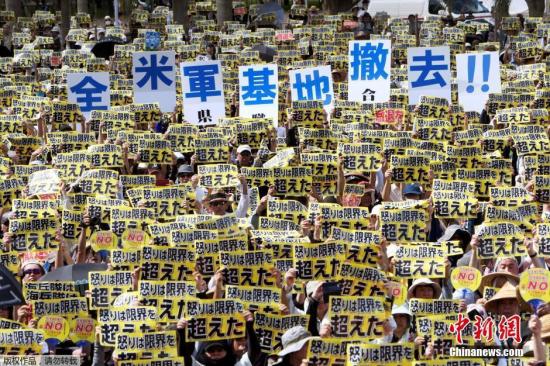China News Service, August 11th. According to Kyodo News Agency of Japan, on the 10th local time, the 31st Naval Expeditionary Unit (MEU) under the US Marine Corps stationed in Okinawa announced that it had carried out a two-week plan in the prefecture. In training to maintain rapid reaction ability. On the same day, Japan’s Okinawa Prefecture stated that a total of 315 U.S. troops stationed in Okinawa had been infected with the new crown virus, and the governor asked them to prevent the epidemic.
Data map: Japan's Okinawa Prefecture held a large-scale rally on June 19, 2016, demanding that all US Marines stationed in Okinawa leave, and fundamentally revising the agreement to grant judicial asylum privileges to US troops stationed in Japan.
According to reports, the US Marine Corps stationed in Okinawa may demonstrate its rapid response capabilities during the new crown epidemic. However, when the U.S. military stationed in Okinawa continues to show people infected with the new crown, it may raise concerns about the spread of infection due to training.
Okinawa Prefecture announced on the 10th that one person in the U.S. Army's Kotney Barracks (Uruma City) was infected with the new crown virus, and the cumulative number of infected people in the U.S. Army in Okinawa reached 315. Governor Tamajo said at the press conference: "Although I have not heard of the training content and scale (of MEU), the US has repeatedly requested that the U.S. abide by the sanitation guidelines. In the future, I will continue to request that the residents of the prefecture not cause health anxiety."
According to MEU, the ground, aviation, and logistics units of the Marine Corps participated in the training. On the basis of making a combat plan in a short period of time, use Osprey transport aircraft and ships to implement it. MEU emphasized that strict anti-epidemic measures have been taken, and stated that it "will continue to implement important training to maintain regional security and stability."

